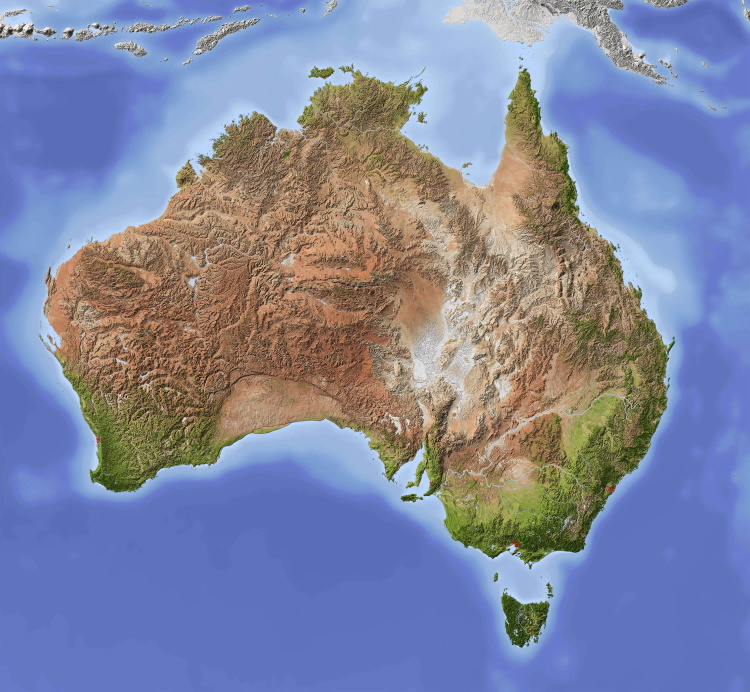- cross-posted to:
- brisbane
- cross-posted to:
- brisbane
Trains. It’s always trains.
That’s half the answer I think the other half would be.
-
Run at a decent frequency - minimum a train every 15 mins off-peak, every 10 if possible. Peak every 3-5 mins.
-
Run expresses from first to last train, this is put to great effect in Sydney but prior infrastructure needs to be completed beforehand. E.g. main routes are minimum 4 tracks, some 6. Dedicated freight lines also help so they don’t conflict with passenger services. What I like is that Cityrail isn’t afraid to run an almost empty all stopper next to an almost empty express.
-
New lines to be done with metro. They seem to be better than trains as they can run every 2 mins, compared to trains would be hard pressed to run every But the main point is that it is faster than even express trains, meaning you can have way more stops but still be competitive with time. Nothing tells me that I should drive than seeing trains fly past my station due to it being classified as a “small station”
-
Suburban interchanges - not everyone wants to go to the city so it’s important to provide interchanges in the suburbs. Sydney is terrible at this, for example there needs to be a Hurstville to Macquarie Park line. There is not so two of the most congested roads follow this path because there’s no option but to drive.
-
Station integration - connecting directly to places of interest like shopping centres. And over station developments. Density helps a lot too.
-
Get rid of car centric suburbs - many stations depend on park and rides which decentives public transport use.
-
Better integrated transport. For example trams, they have their use on street in the city where the stops are closer and it already duplicates a faster line, but once it is out it should be running on dedicated tracks so they don’t need to stop at traffic lights. Similar to parts of L1 and soon Parramatta light rail in Sydney where it is completely segregated with other traffic.
-
deleted by creator
Haha, that was fun, thanks
Are you sure it’s not a tunnel for a single row of Tesla’s to go through?
deleted by creator
Every 5 years they add another lane or put in a bypass for the worst offending roads that is meant to solve the problem for the next 5 years. There are never long term solutions.
deleted by creator
We will have a “second m1” soon. Why, we will never know.
I guess we never learn
Easy - work from home for the office workers who can do so. That should remove a good portion of the traffic.
Tackling congestion is something that should be done, it is a huge drag on productivity as well as quality of life. The challenge as I see it is the tough decisions that would need to be made and the political capital that it would cost the decision makers - as such I don’t see any Australia govt and any level doing much to fix the problem for decades still.
As I see it there are a several main setting changes that need to happen to contribute to the overall goal.
- Reduce demand - Decentralise cities, give people the right to WFH, develop 15 minute towns/villages, satellite CBDs, regional hubs etc.
- Incentivise other modes of transport - create more comprehensive public transport networks and make it free, tax incentives for active travel (purchase personal mobility devices with pre tax income, interest free loans etc), increase shared user path construction, reduce speed limits, build sensible regulations around personal E-Mobility devices, develop last mile logistics that utilise E Cargo bikes and other alternatives to large vehicles in CBDs &town centres etc.
- Disincentivise single occupier personal vehicle use (this is the hardest one!) - introduce CBD/inner ring time of day and/or congestion charges, variable peak hour commuter toll charging, KM travelled based charging for vehicle use, or similar, create slow streets and other car hostile town planning.
It is impossible to stop people driving cars, but COVID certainly showed that making changes to how people work and incentives/disincentives to traveling can have a large impact.
I acknowledge that many people will still need and want to drive personal vehicles, I I bet by pulling all these levers together then it would significantly change the way people move around Australian cities.
Don’t forget schools. On 11% of primary school kids take the bus to school. It’s a little better for high school but still nowhere near where it should be.
That’s a great point that I forgot about.
Back during COVID lockdowns reintroduction of school in my area saw the local streets go from basically empty to back to 80% load, all be it only for the one hour of drop off in the morning, and maybe 60% in the afternoon pick up.
It was striking how so much of my local traffic was people driving kids a few hundred meters to school (I live in a very school dense area).
I started biking because there’s a lovely bike path pretty much from my house to my work. My drive time ranged from 24-35 minutes, biking takes 48. Sure it’s longer, but I’m fitter and happier.
I’m the last sort of person to bike about, but that amazing bike path pushed me into buying a bike.
Build more dedicated bike paths!
Anyone know that Daniel Bowen guy back on Reddit. This sort of thread was his thing. He’d have stats, opinions, but more importantly, cool infographics and such.
I ride my bike to work when I can as my drive is only 10-15 minutes each way, but when I’ve got a daycare drop off before 7 each day and then pickup in the afternoon, plus other errands to run the bike doesn’t work all the time and public transport in Hobart isn’t the greatest. Times will change hopefully
Are you willing to do an unpopular solution? Tolls.
Tolls just shift the car population from one road to another. It doesn’t keep the car off the road in the first place.
That’s true but more an argument why we need more consistent tolling not to mention more congestion pricing.
You can’t toll everything. You need to address the root cause, push for working from home and make public transport accessible and cheap. Otherwise you have a bunch of people driving through local south Brisbane thoroughfares because there’s no tolls, causing massive congestion.
I’m definitely not against adding more public transport or pushing working from home but that’s not really going to help with traffic unless you also control population growth because you’ll just have more demand. Look around at other cities the only ones that don’t have large amounts of peak hour congestion have tolling arrangements or some sort of car usage restriction.
Could you provide some examples? Demand is demand to get to a destination. If public transport is effectively run and managed, it may be the better option for a lot of people. You are right though, but to ask another question, would you support making those roads smaller with toll monies? I could imagine this ending up with roads only being used by the rich type thing.
Could you provide some examples?
There’s plenty examples on https://en.wikipedia.org/wiki/Congestion_pricing
Demand is demand to get to a destination. If public transport is effectively run and managed, it may be the better option for a lot of people.
Over a short timeframe yes demand is demand and it’s not going to change much but people also move to different areas and a big consideration would be the difficulty and time of the commute. What that ends up meaning is any reducing in demand on an individual road will likely just mean people moving to take advantage of that.
You are right though, but to ask another question, would you support making those roads smaller with toll monies? I could imagine this ending up with roads only being used by the rich type thing.
What’s the appeal in making it smaller? I could understand that in the concept of maybe converting some into rail or other public transit infrastructure. Generally I think commuting to work in large CBD by car already has become a “rich type” thing with the cost of parking I think focus should just be more on having good alternatives.
What’s the appeal in making it smaller…
You’re right, knee jerk reaction more than anything.
If we can get more people to take advantage of good public transport that’s always a good thing and congestion pricing seems like a great way to do that. I had never heard of this prior.
Does that even work? Most people aren’t sitting in traffic because they want to be there.
Mandate WFH for office workers and most will avoid the traffic by themselves.
Look up induced demand but the tldr is that adding more roads or reducing the cost just encourages more people to travel. Currently a lot of roads you are just paying this in time but this is inefficient as it doesn’t encourages car sharing or buses (unless they are given priority). The revenue unlike wasted time in traffic can also be used to improve the road capacity or for public transit alternatives.
That, and local trips. It’s not just workers commuting, though that doesn’t help. It’s local trips too, including people driving to the shops because of poor urban design which mandates car use regardless of whether appropriate. Even if you remove the commute, you may end up with more car use locally
Very unpopular for a good reason
This would work, but it would be better if you had to pay for by the miles on your vehicle rather than tolls on any particular road.
Easiest way to do that would be raise the tax on fuel, but that would be very unpopular.
They’re already looking at implementing a odometer based tax on EVs. They should just implement that for all road registered vehicles and leave the fuel tax as is (or lower).
Adding mass transit, incentives for work-from-home, etc. are all good. Taxing miles driven will reduce miles driven. Just taxing EV miles to make up for lost gas tax revenue probably won’t affect miles driven, except for EV drivers. It provides no new reason for GVs to drive less.






